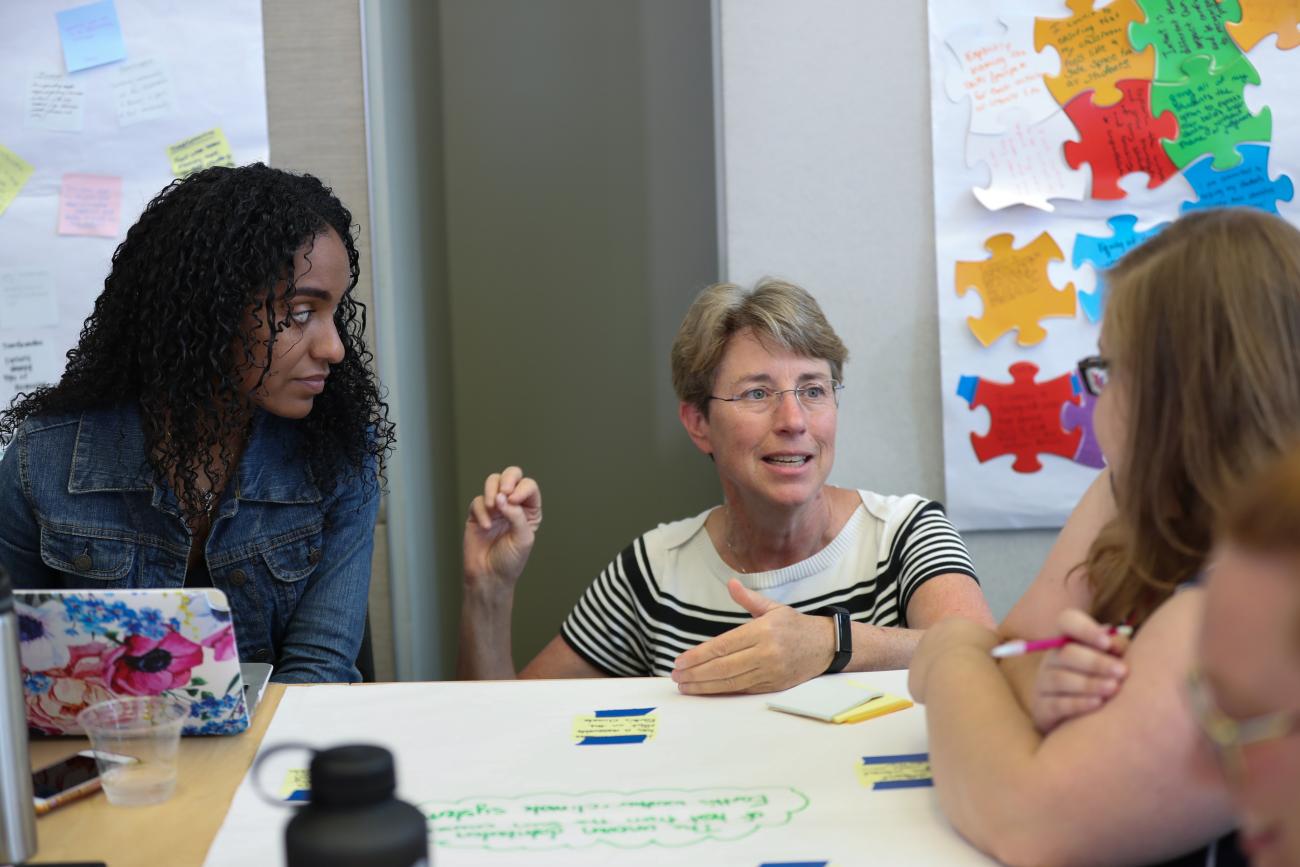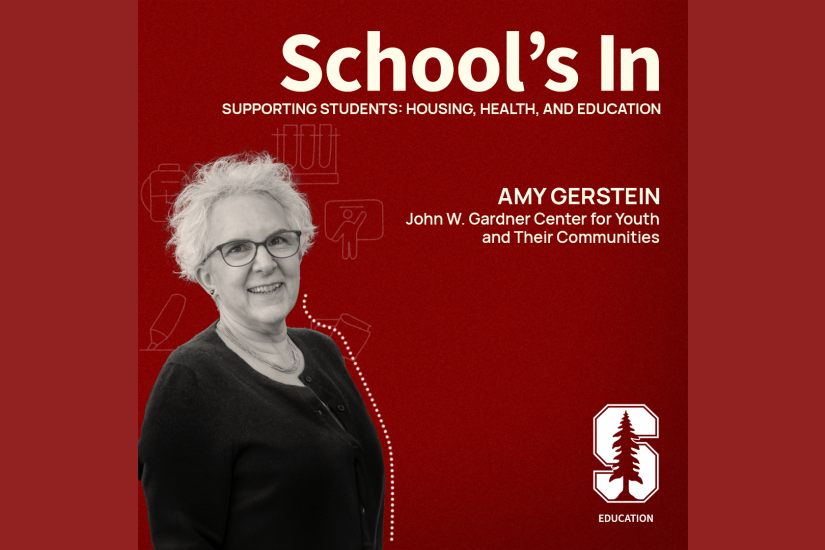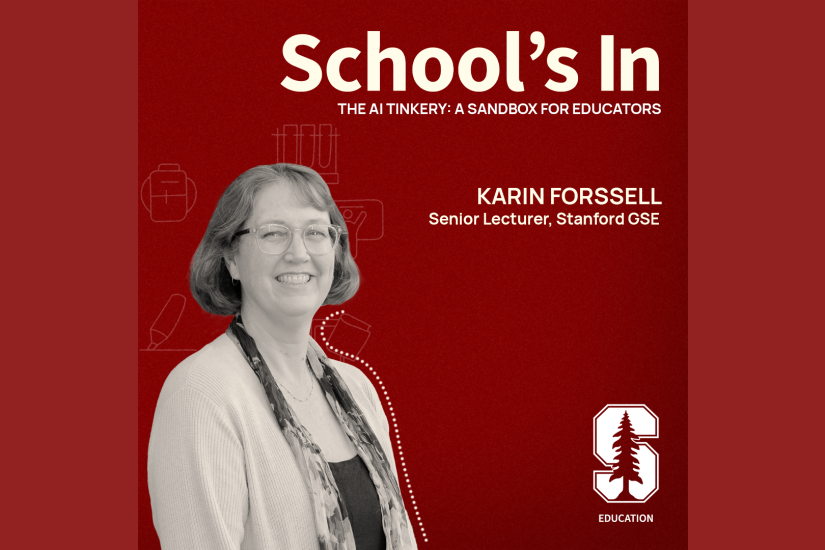
Stanford launches new professional certificate program for school system leaders
Gregory C. Hutchings, Jr., was only 35 when he became superintendent of a suburban school district outside Cleveland, Ohio, six years ago.
“I had all of the same challenges that any superintendent has, in addition to being a person of color and someone who started out in the superintendency at a young age,” says Hutchings, who recently returned to his Virginia hometown to take on the top post at Alexandria City Public Schools.
Even with several previous high-level roles in school administration and a doctorate in education, he quickly came to see the importance of ongoing support and skill development to succeed in the position. “Applying theories to practice, and navigating the politics and relationships—it doesn’t work the same way in real life as it does in a textbook.”
Hutchings is one of a team of superintendent advisors for Stanford EdLEADers, a new online professional development program that helps school system leaders build the confidence, skills and support they need to thrive in increasingly complex roles. The program, created through a partnership between Stanford Graduate School of Education (GSE) and Stanford Graduate School of Business (GSB), focuses on concerns at the intersection of education and management: equity-related issues, negotiations, driving organizational change, improving quality of teaching, managing organizational systems and leading effective teams.
“As a superintendent—regardless of whether you’re in a small, rural district or a major urban one—you’re scattered in a hundred different directions,” said John Brackett, EdD ’90, a longtime superintendent who now consults with school and district management and also serves as an advisor for Stanford EdLEADers. “Things come at you so rapidly, and you don’t often get a chance to take time to reflect, to engage with colleagues, to get a deeper understanding of what’s going on. This program gives superintendents an opportunity to do that.”
Taking on the most pressing challenges
In 2017, Stanford GSE surveyed school system superintendents throughout the United States about their most pressing challenges. High among them were developing long-term, effective professional development plans to improve learning outcomes, overseeing and building support for change initiatives, negotiating contracts and managing relationships.

After a four-week course pilot in 2018 with school system leaders from across the country, Stanford EdLEADers launched its six-course offering. With live online events, individual assignments, small-group projects and discussions on an innovative learning platform, the curriculum includes courses taught by faculty from both the GSE and GSB. The inaugural cohort of 35 superintendents and education leaders began in April 2019.
“Leading for Opportunity,” the first course of the program, guides participants through a case study of an inner-ring suburban school district that faces challenges in its commitment to equity. Real-life data, including digitally recorded interviews from stakeholders in the district, help deepen participants’ understanding of the politics of change.
Carmen Darville, chief of staff at YES Prep Public Schools in Houston, Texas, and a participant in the inaugural cohort, found the content immediately useful in her work leading her school system’s diversity, equity and inclusion work. The course offers “a through line to my day job,” she said. “Rather than seeing equity as a concept that I believe in but can’t really hold on to, I’m finding an advantage in how I’m positioned to do my job.”
Additional courses support participants in leading effective teams, improving teaching quality, negotiating, managing organizational systems and leading change within a district.
“The best professional development education is job-embedded,” said David Brazer, an associate professor of education at Stanford GSE and instructor for the program’s “Leading for Opportunity” course. “With Stanford EdLEADers, the research you learn, you can practice in real time. It’s relevant the next morning.”
A lonely job
An important component of the program is the relationships superintendents build while working together in small groups on specific exercises and challenges.
“Participants are learning not only from Stanford faculty but from each other,” said Nereyda Salinas, executive director of GSE’s EdCareersand program director for Stanford EdLEADers. “Their positions can be very lonely, and the program builds camaraderie and a culture of sharing struggles and best practices.”
Because the virtual program draws participants from across the country, it provides school system leaders with fellow strategists whose distance can be an asset. “To be frank, there’s sometimes safety in being able to talk and be vulnerable about your leadership with people who aren’t colleagues within your district or even within your state,” said Brackett.
What’s more, the diversity of districts represented by program participants—geographic location, size, urban or rural—offers a variety of viewpoints on mutual challenges.
“Interacting with people in different states, in different roles, builds a strength of perspective,” said Jim Lianides, a Stanford EdLEADers advisor and longtime superintendent in the San Francisco Bay Area, now retired after 39 years of working in education. “The relationships that participants create in this program can last and become a networking group for many years.”
That support is critical and can be hard to cultivate otherwise, said Libia Gil, former chief education officer for the State of Illinois and former assistant deputy secretary for the U.S. Department of Education, who serves as an advisor for Stanford EdLEADers.
“There aren’t that many opportunities for aspiring or even current superintendents to have this kind of network,” she said. “The program is carefully designed to encourage cohort learning, engagement with each other—continuous reflection and feedback that you don’t get in real life. It’s powerful learning that can elevate, and maybe even redefine, the possibilities of school system leadership.”
Learn more about Stanford EdLEADers and sign up for updates at edleaders.stanford.edu.
Faculty mentioned in this article: Janet Carlson



